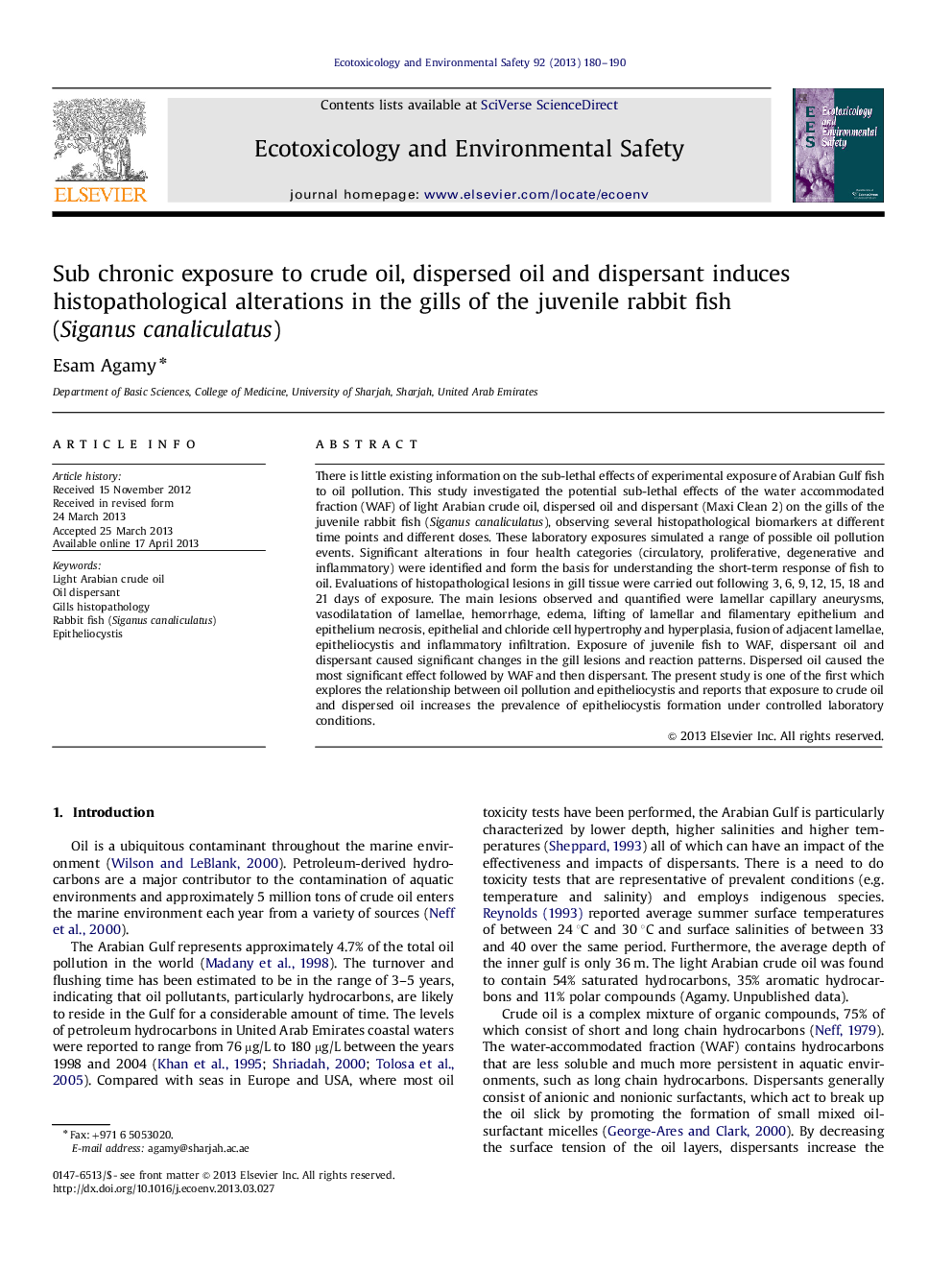| Article ID | Journal | Published Year | Pages | File Type |
|---|---|---|---|---|
| 4420450 | Ecotoxicology and Environmental Safety | 2013 | 11 Pages |
•Dispersed oil is more toxic than crude oil or dispersant to the gills of the juvenile rabbit fish.•Crude oil and dispersed oil increases the prevalence of epitheliocystis formation under controlled laboratory conditions.•The juvenile rabbit fish gills exhibit chloride cell hypertrophy and hyperplasia.
There is little existing information on the sub-lethal effects of experimental exposure of Arabian Gulf fish to oil pollution. This study investigated the potential sub-lethal effects of the water accommodated fraction (WAF) of light Arabian crude oil, dispersed oil and dispersant (Maxi Clean 2) on the gills of the juvenile rabbit fish (Siganus canaliculatus), observing several histopathological biomarkers at different time points and different doses. These laboratory exposures simulated a range of possible oil pollution events. Significant alterations in four health categories (circulatory, proliferative, degenerative and inflammatory) were identified and form the basis for understanding the short-term response of fish to oil. Evaluations of histopathological lesions in gill tissue were carried out following 3, 6, 9, 12, 15, 18 and 21 days of exposure. The main lesions observed and quantified were lamellar capillary aneurysms, vasodilatation of lamellae, hemorrhage, edema, lifting of lamellar and filamentary epithelium and epithelium necrosis, epithelial and chloride cell hypertrophy and hyperplasia, fusion of adjacent lamellae, epitheliocystis and inflammatory infiltration. Exposure of juvenile fish to WAF, dispersant oil and dispersant caused significant changes in the gill lesions and reaction patterns. Dispersed oil caused the most significant effect followed by WAF and then dispersant. The present study is one of the first which explores the relationship between oil pollution and epitheliocystis and reports that exposure to crude oil and dispersed oil increases the prevalence of epitheliocystis formation under controlled laboratory conditions.
